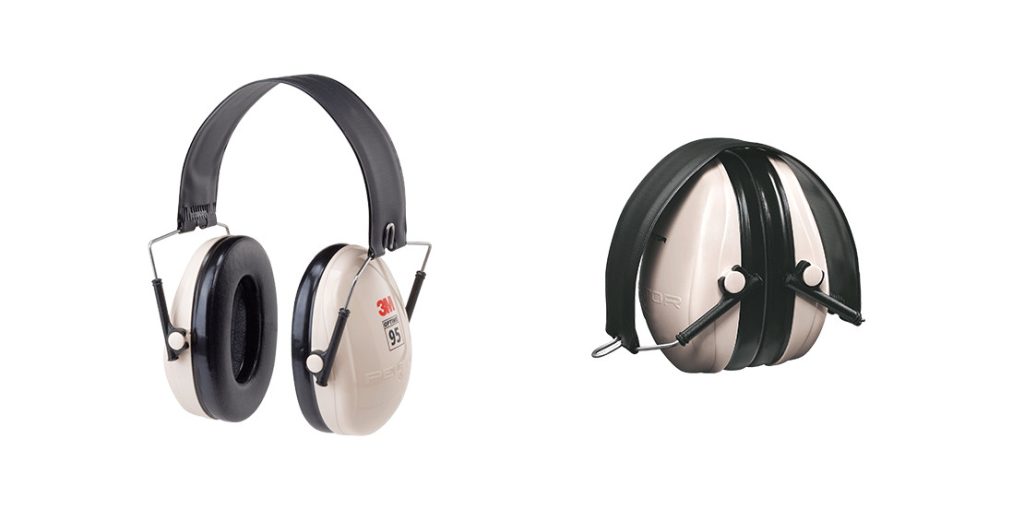Earmuffs
Over-the-ear muffs, commonly known as earmuffs, are a type of hearing protection device designed to cover the entire external ear to reduce the amount of sound that can reach the inner ear. These devices are crucial in environments with prolonged or high-intensity noise, offering an effective way to prevent noise-induced hearing loss (NIHL).
Shop our collection of Earmuffs!

Earmuff Design and Features
Earmuffs consist of two soft ear cups lined with sound-dampening material, connected by a rigid headband. The ear cups fit over the entire outer ears and are sealed with cushions that often contain foam or fluid. This design helps to create an acoustic seal that blocks external noise from entering the ear canal.
The effectiveness of earmuffs is influenced by several factors:
- Material: The sound attenuation properties depend on the materials used in the cups and the sealing cushions.
- Fit: Proper fit is crucial as gaps can significantly reduce the effectiveness of the earmuffs.
- Seal: The pressure of the headband plays a role in maintaining a good seal against the head, which is necessary for optimal performance.
Types of Earmuffs
Earmuffs are categorized based on their purpose and the additional features they offer:
- Passive Earmuffs: These provide noise reduction through physical materials alone and are suitable for constant noise environments, such as factories or heavy equipment operations. Try the Peltor/3M Optime 95 Earmuff!
- Electronic Earmuffs: These include microphones and speakers that can amplify quiet sounds while blocking harmful noise levels. They are ideal for environments where it is necessary to hear ambient sounds or conversations, such as shooting ranges. Try the Peltor Tactical Sport Electronic Earmuff!
- Communication Earmuffs: Integrated with communication systems, these are used in environments where communication between individuals is essential, despite high noise levels, like in aviation and construction sites. Try the Peltor Tactical Pro 7 Electronic Earmuff!
Noise Reduction Rating (NRR)
Earmuffs are rated by their Noise Reduction Rating (NRR), which indicates the level of sound attenuation provided. The NRR is measured in decibels (dB), with higher values indicating greater potential noise reduction. However, the real-world effectiveness can be less than the rated protection due to factors like improper fit or maintenance.
Usage and Maintenance of Earmuffs
Proper usage and maintenance are key to ensuring the effectiveness of over-the-ear muffs:
- Fit Check: Always check for a proper seal around the ears. Hair, glasses, or other obstructions can compromise the seal and reduce effectiveness.
- Cleaning: Regular cleaning of the ear cushions and headband is necessary to maintain hygiene and performance, as build-up of oils, sweat, and dirt can degrade the materials.
- Storage: Earmuffs should be stored in a clean, dry place to avoid damage to the cushioning and headband.
